Reporting Asian hornet
Report sightings of Asian hornet and suspected nests:
- with the Asian Hornet Watch app for iPhone and Android
- online through the Asian hornet online recording form
- by email
For assistance with identifying a suspected Asian hornet nest, or to help identify nests, please contact your local Asian Hornet Action Team.
How to identify an Asian hornet nest
Asian hornet, Vespa velutina, produces two types of nest, primary and secondary:
Primary nests
- Spherical with a small entrance hole at the base, usually 5 to 10 cm in diameter.
- Built in spring by a lone Asian hornet queen, usually in a protected place such as brambles, a hedgerow, or in / on a building.
- All primary wasp and hornet nests look similar, only report primary nests if seen with Asian hornets. To identify a nest, watch for returning insects from a safe distance.
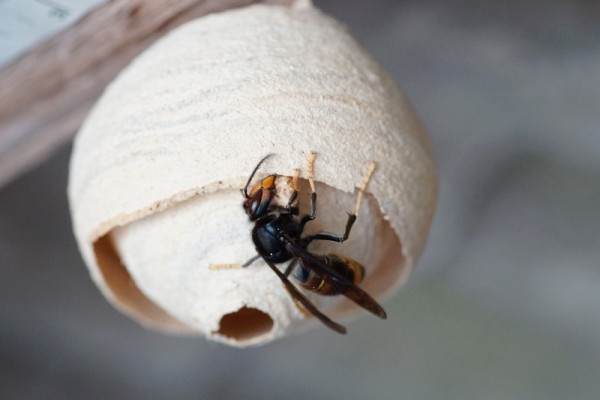
Example of a primary Asian hornet nest. Image John de Carteret - Jersey
Secondary nests
- Pear-shaped, entrance hole halfway up the nest, up to 60 cm wide x 80 cm tall.
- Usually found in trees, may also be in buildings and hedges.
- Use binoculars to identify secondary nests from a safe distance. Do not disturb suspected nests and retreat from any wasp / hornet nests if flying insects are observed.
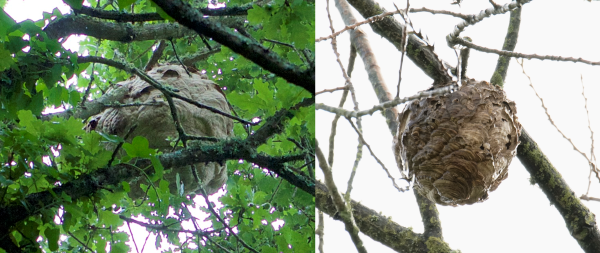
Secondary Asian hornet nests in trees in summer (left) and winter (right). Images John de Carteret - Jersey
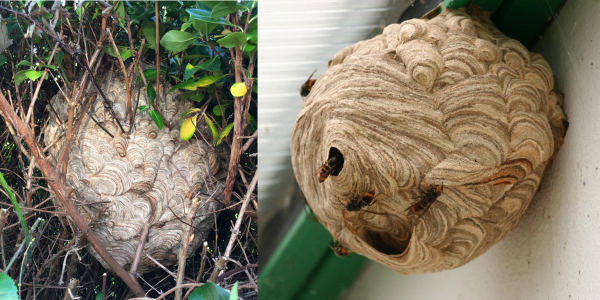
Secondary Asian hornet nests in a hedge (left) and building (right). Images John de Carteret - Jersey
Common locations of nests
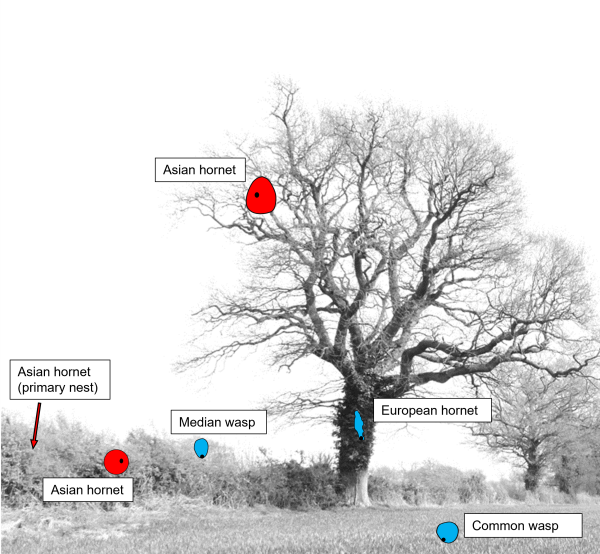
Common locations of Asian hornet nests and nests of other wasps and hornets. Tree image adapted from Trees in a hedgerow by Marathon, CC BY-SA 2.0 via Wikimedia Commons.
Nests of similar species
Secondary Asian hornet nests may be confused with other wasp and hornet nests, or objects in trees. If you suspect you have seen an Asian hornet nest, please use binoculars to check from a safe distance before reporting.
European hornet, Vespa crabro - secondary nest
- Usually in hollow trees, chimneys, rarely in the open air.
- Cylindrical.
- Wide opening at the
bottom. - Usually 30 x 60 cm.
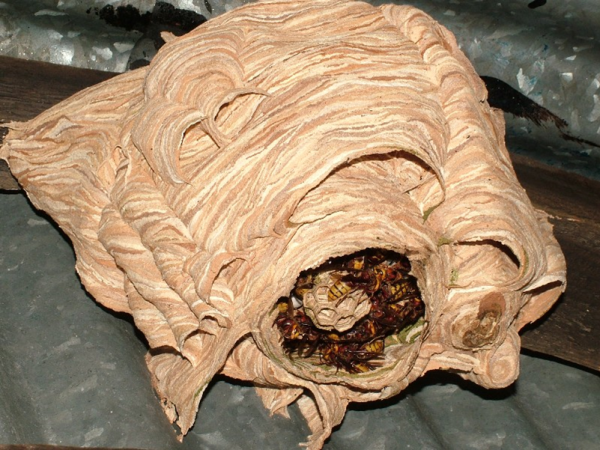
Secondary European hornet nest. Image Crown Copyright.
Common wasp, Vespula vulgaris - secondary nest
- Usually on the ground, or in confined spaces in buildings.
- Round to conical.
- Small hidden opening at the lower end.
- Usually 30 x 35 cm.
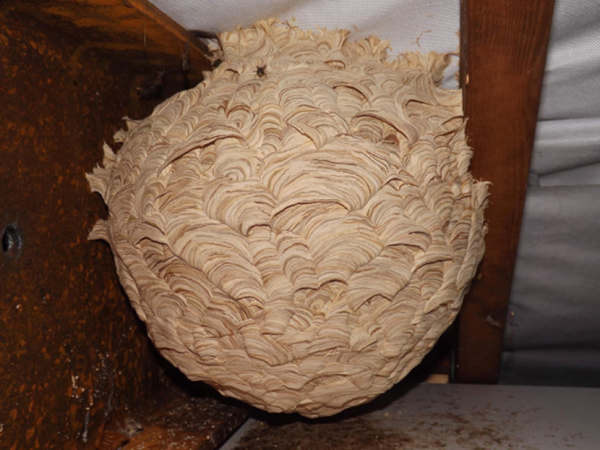
European wasp nest. Image David Jones.
Median wasp, Dolichovespula media
Secondary nest
- Usually in bushes that are less than 2 m tall.
- Conical.
- Small opening at lower end, off centre.
- Usually 20 x 25 cm.
Primary nest
- Characteristic tube-shaped entrance (unlike a primary Asian hornet nest).
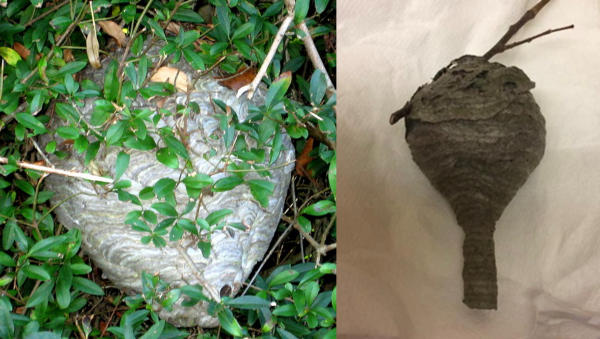
Secondary (left,) and primary (right) median wasp nest. Left image Sarah Smith / A Euro-wasp nest - Pendomer, CC BY-SA 2.0 Generic, via Wikimedia Commons. Right image Karen McCartney.
Other objects in trees
- Crow and magpie nests.
- Mistletoe.
- Squirrel dreys.

Birds nest in a tree. Image Crown Copyright.
